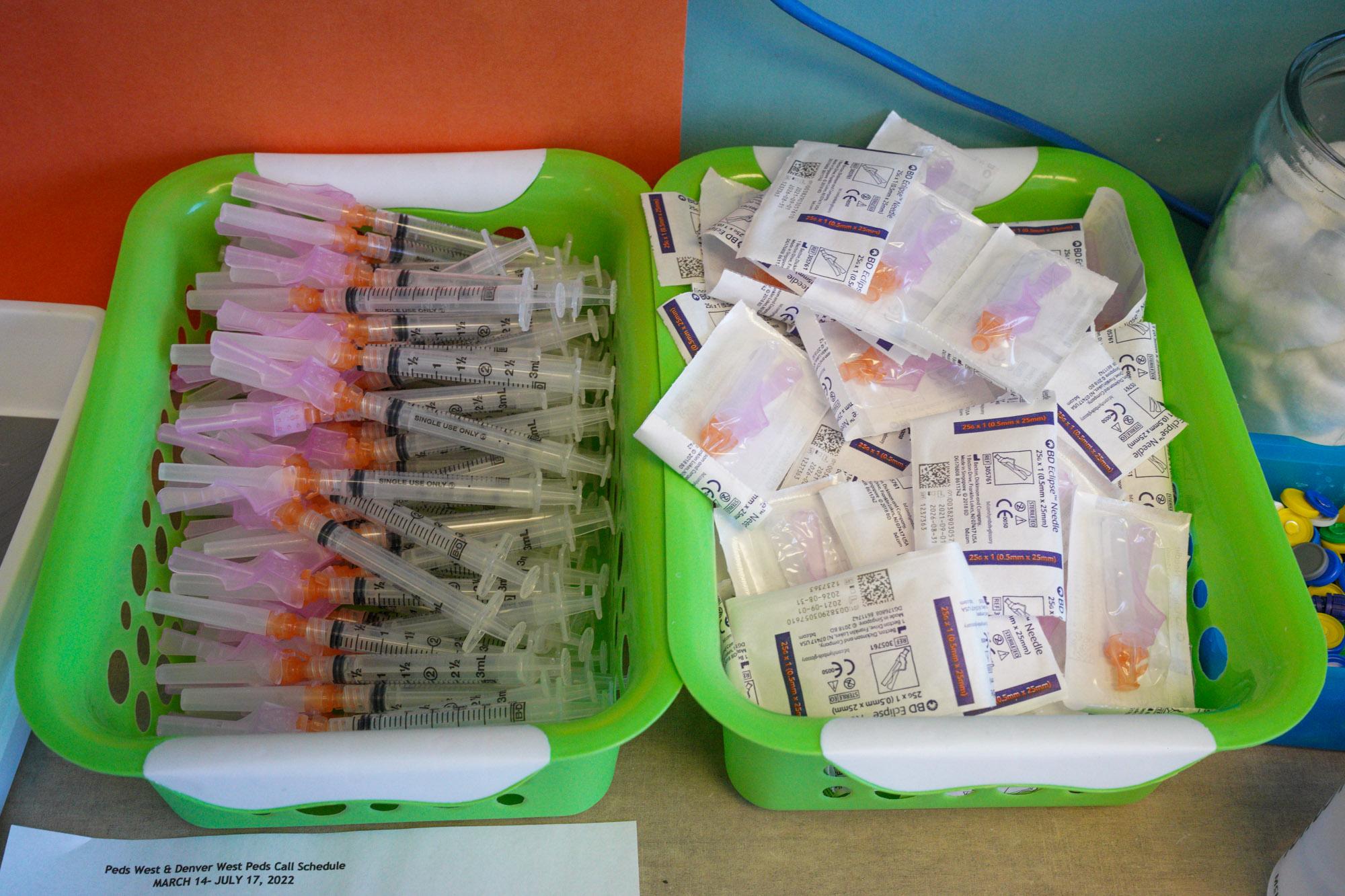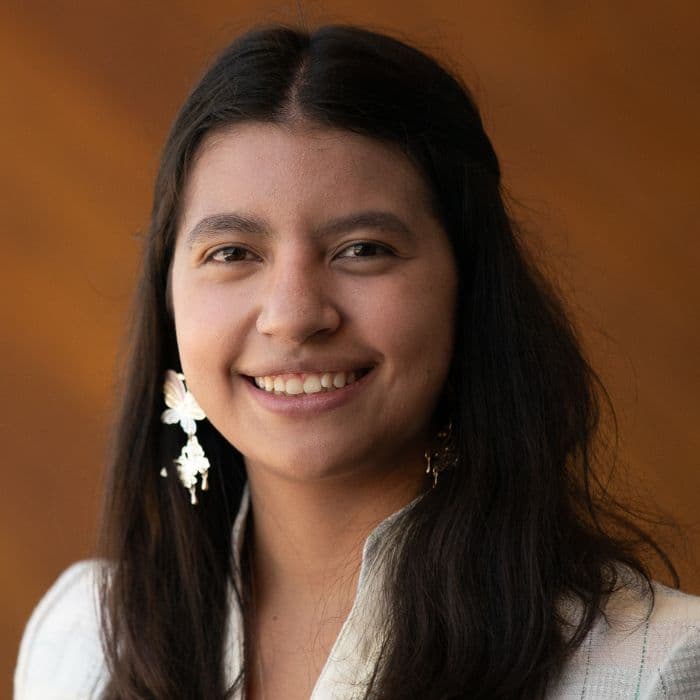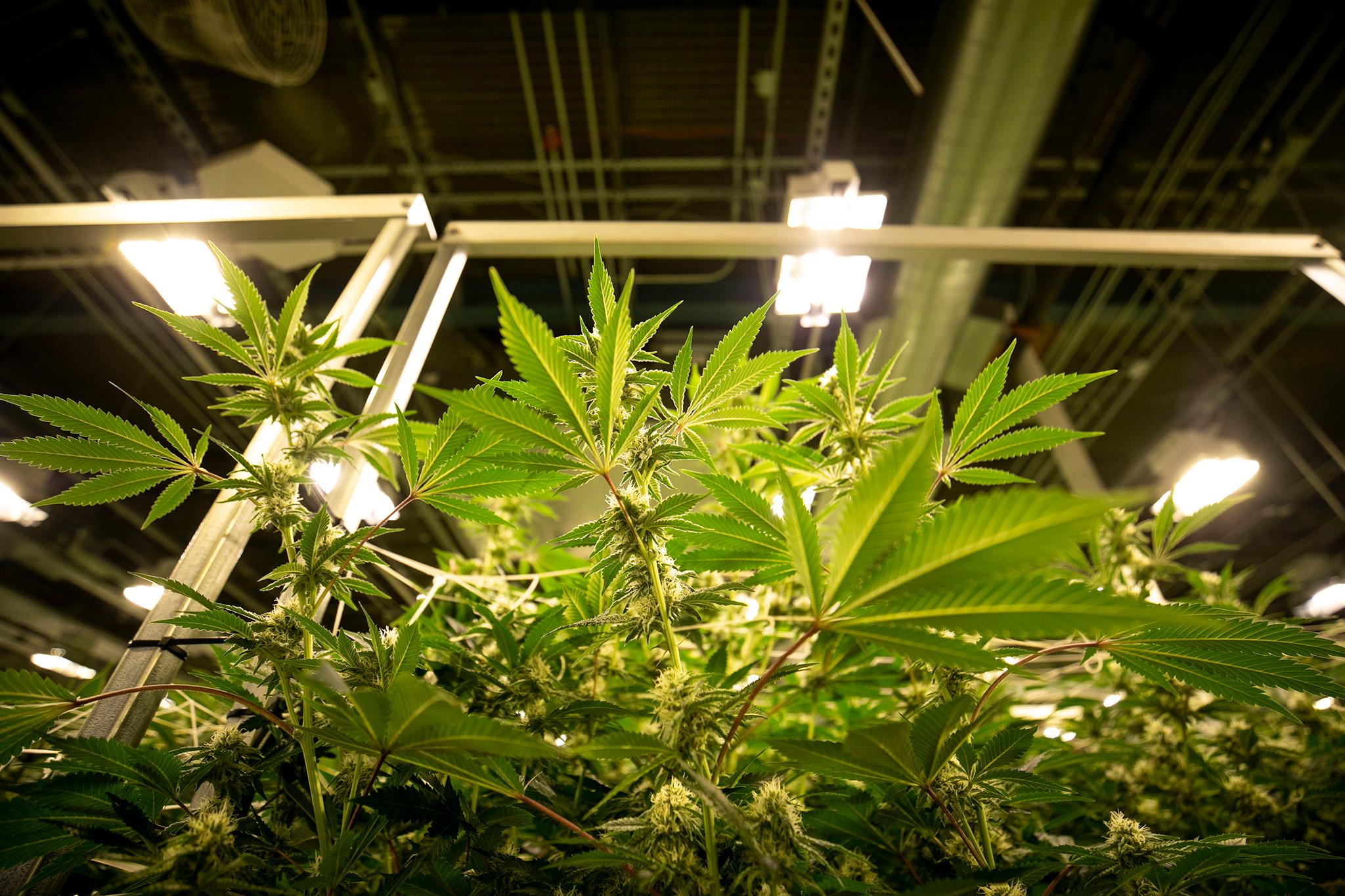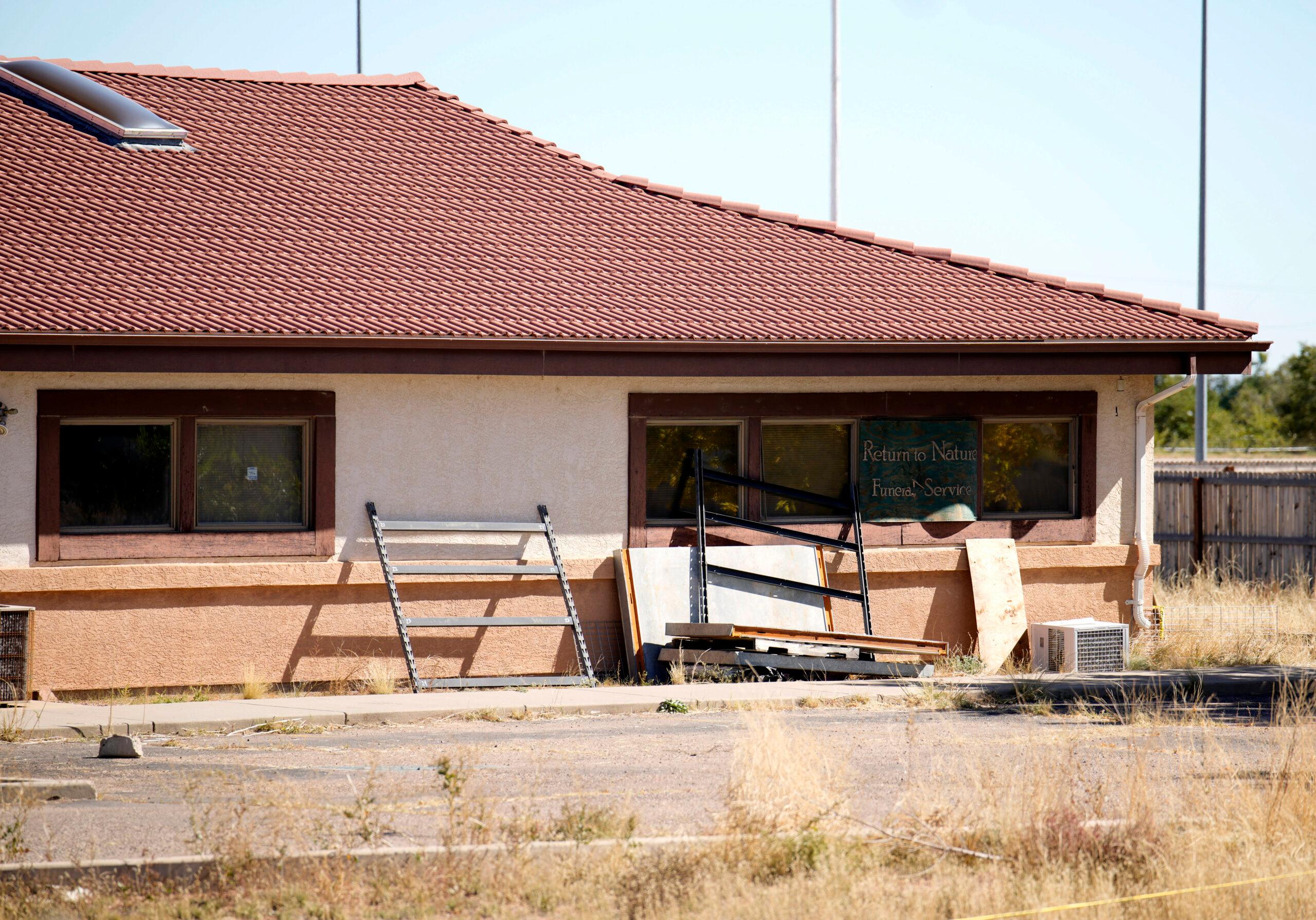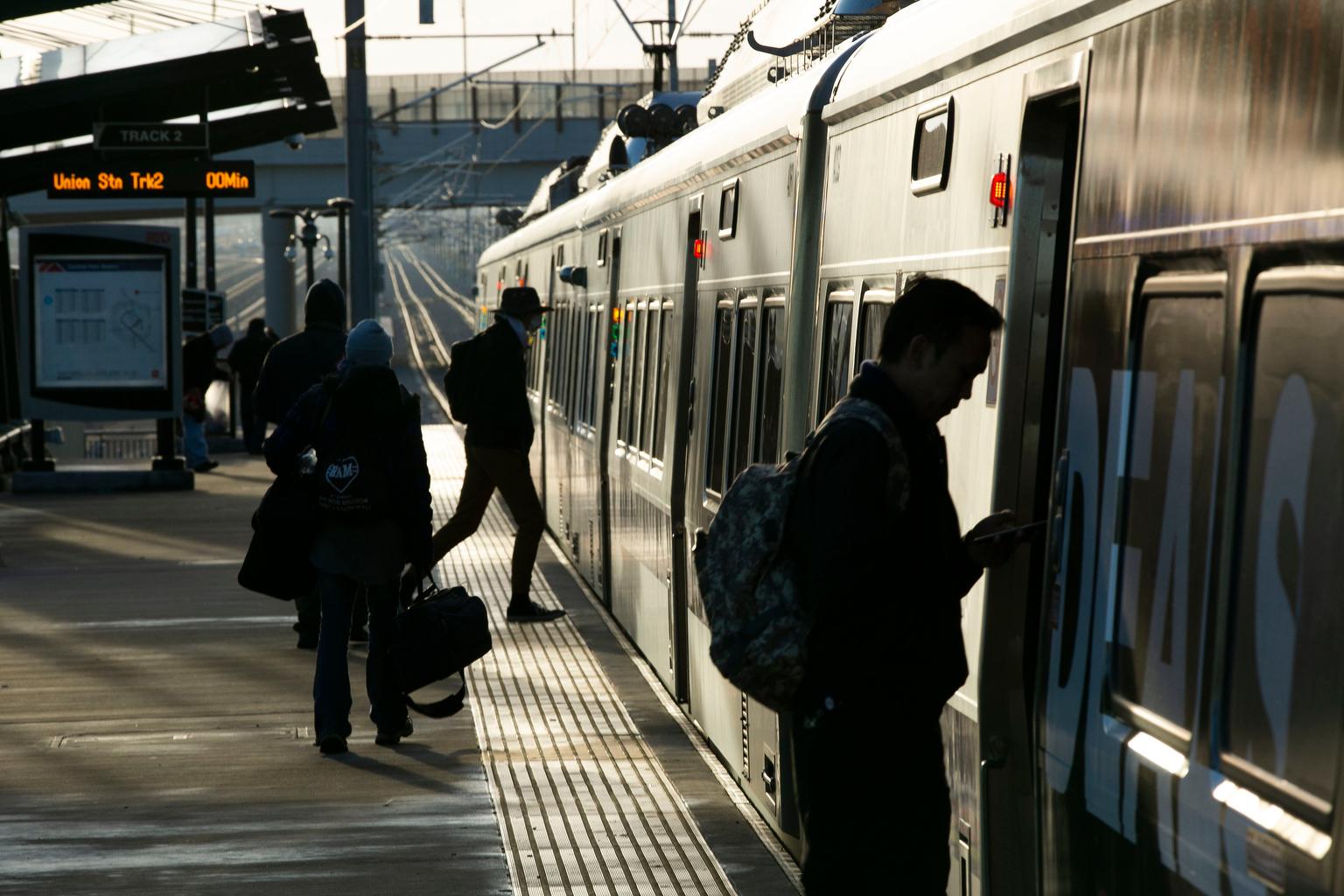
When Angie Rivera-Malpiede heard Gov. Jared Polis say that the state had no intention of giving the Regional Transportation District any guaranteed new funding, she had two thoughts.
“I was surprised,” said Rivera-Malpiede, chair of the RTD board. “Well, maybe I wasn't so surprised.”
Polis has been publicly upset with RTD since at least 2012 over delays on its FasTracks rail expansion plan. Then, as congressman from the state’s second district, he demanded that RTD stay committed to its planned commuter rail line to Boulder and Longmont.
Now, as the Democratic-controlled legislature prepares to tackle transportation funding, Polis told CPR’s Colorado Matters last week his displeasure with RTD is one reason why they’re being left out of a proposed $4 billion package.
“I, and many others at the state level, are not always happy with everything RTD does,” Polis said. “So we’re certainly not about to give them money, but the state absolutely supports local transit.”
The proposal, which sponsors say will be formally introduced in the coming weeks, includes roughly $700 million in multimodal spending over the next 10 years. That’s about 16 percent of the nearly $4 billion that the bill would provide, with the rest going toward roads and driving, including electric vehicles.
Some of that transit money is reserved for:
- The Colorado Department of Transportation’s fledgling inter-city bus network.
- A long-term plan for Front Range passenger rail that could benefit RTD.
- Infrastructure improvements like bus stations at interstate overpasses.
- And local transit service across the state.
It's possible RTD could receive some of that local transit money, said Rep. Matt Gray, D-Broomfield, a co-sponsor of the coming bill. He described the bill language as "agnostic" to RTD.
But with no direct new funding for RTD, it's unclear how much the bill will do to address the transit needs of the state’s largest metro area.
“I can't make someone like us,” Rivera-Malpiede said of the governor’s public statements about the transit authority. “I just have to keep working.”
The Boulder train is the 35-mile gorilla in the room.
After public pressure from Polis, RTD will restart its planning later this year for a stripped-down 35-mile extension of the B Line to Boulder and Longmont, which currently ends in Westminster. Early estimates put costs at $700 million and ridership at 800 every weekday, though those could change with additional study.
Those economics are difficult, Polis acknowledged in an address to the RTD board in February. But he said RTD still had an obligation to build the line.
“I don't think anybody would make this deal today,” Polis said. “But that doesn't matter. The voters have been paying taxes for this project now since 2005.”
A Polis-appointed member of the independent RTD accountability committee disagrees with the governor. Rutt Bridges, a wealthy software developer, argued at a recent meeting that no version of the project — its full buildout, a bare-bones line, or a collaboration with a possible Front Range rail line — was feasible. Bridges is a former board member of Colorado Public Radio.
His analysis, for example, suggested that a full buildout, at an estimated $1.6 billion, would result in a required subsidy of $29 per passenger per ride. Instead, he suggested a network of bus rapid transit lines in the northwest region.
“There’s a really great opportunity for these BRT lines to not just do what the [B Line] would have done, but to really surpass the promises of [the B Line],” he said.
A handful of RTD board members have been critical of the B Line, but a majority still support it and other unfinished FasTracks projects.
Myriad plans call for more transit, but sustained funding is unclear.
RTD has already received at least $430 million from the first two federal stimulus packages and will receive more from the $1.9 trillion bill passed in March. Federal guidelines say those one-time payments are to be spent on preserving service and the agency’s vast workforce of drivers, mechanics and other key personnel.
President Joe Biden’s $2 trillion infrastructure proposal includes $85 billion for public transit over eight years, a huge increase over current funding levels. The package faces a tough road in the closely divided Senate, but Rivera-Malpiede said the Biden administration’s clear desire to boost public transportation gives her hope.
“I think that we are in a new place for transit,” she said.
RTD is still facing an uncertain financial future, partially because of huge debt burdens from its decade-plus push to expand rail. That’s even as various climate and transportation plans for the state and region anticipate transit taking a larger role in a region where vehicle travel dominates.
The RTD accountability committee, which Polis helped create, is drafting a statement on the need for more state funding for transit, including RTD.
“We need to invest in solutions that reduce climate emissions and reduce air pollution. And transit is part of the solution,” Elise Jones, co-chair of the accountability committee, said at a recent meeting.
The Denver area's planning organization, DRCOG, has set long-term goals to reduce greenhouse gas emissions, travel delays and cut the use of single-occupancy vehicles, along with slashing overall miles traveled.
It found that urban-centric development and a heavy investment in rail and bus transit — more lines, more frequent service, and free fares — may be the only way to achieve that.
The city of Denver and the state’s climate roadmap both call for an increase in transit service. A group of advocacy organizations has called for an increase of $1 billion in transit and other multi-modal spending every year across the state.
What does the transit spending plan look like if RTD isn’t included?
The town of Castle Rock is a good example. It’s the most southerly major outpost in the Denver metro. It’s a 30-mile drive from downtown Denver, beyond the reach of RTD’s rail and bus services — which means driving on Interstate 25 is one of the only options for its nearly 70,000 residents.
If you’re headed northbound from the growing suburb, “you just never know,” said Mayor Jason Gray. “If you’re going into Denver, it can be anywhere between a half an hour and an hour, so it can get pretty long.”
He added: “That’s why I like to stay in town.”
The town is slated for two major projects in the state’s long-term plans — and they symbolize how state decision makers are thinking about transit and highways.
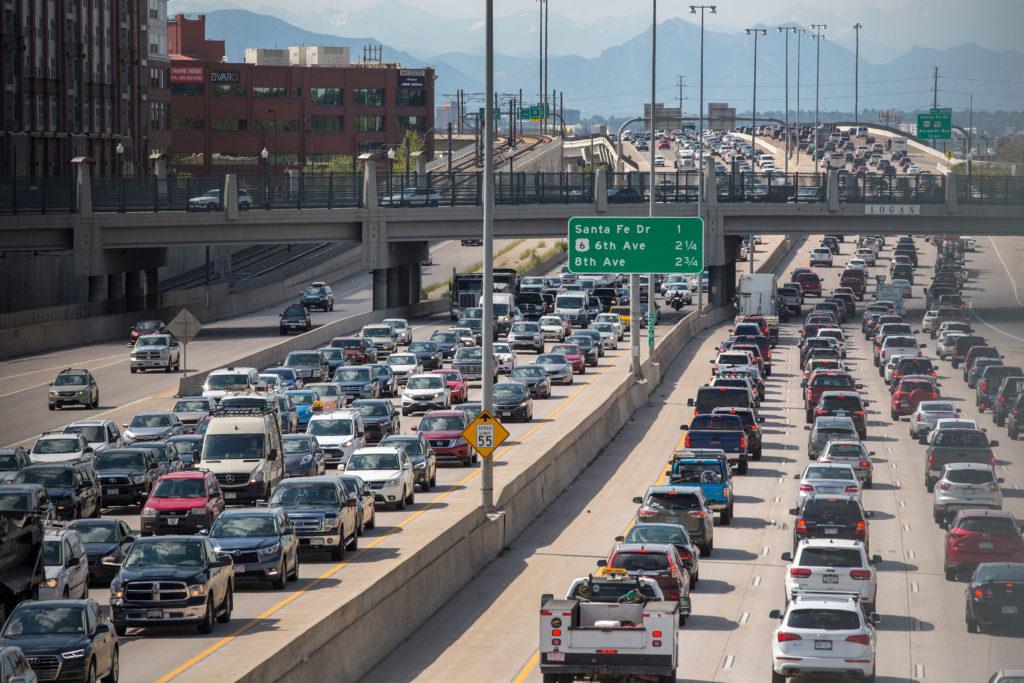
One project, a $5.5 million “mobility hub” along Interstate 25 could help bring reliable bus service back to the town. The other project would put $37 million into widening U.S. 85 — just one portion of a larger, far more expensive effort to upgrade the road, which is an alternative to Interstate 25. And I-25 itself is also set for billions of dollars of widening, interchanges and fortifications along the Front Range.
For Castle Rock and elsewhere, the spending focuses on roads and highways — while adding some new bus service options and electric vehicles to those roads.
“We're definitely vehicle forward, for sure,” Mayor Gray said. “We have a lot of people who like to travel in Castle Rock by bike and multimodal stuff. But once you get outside of Castle Rock, we don't have a lot of calls for the multimodal.”
Funding for transit in the new proposal is split between local governments and CDOT. For its part, the state will try to establish a demand for transit service through an expansion of its Bustang inter-city network, said CDOT Executive Director Shoshana Lew.
“Assuming that it's as popular as we think it will be, it helps to build the demand for transit culture up and down [I-25],” she said. “Which, you know, only makes it easier to talk about things like Front Range rail."
While CDOT has been criticized over the environmental impact of its plans to expand highways like Interstate 270 and Interstate 70 at Floyd Hill, Lew said the agency’s 10-year plan has fewer expansion projects than predecessors and is trying to focus on pinch-points. Much of its budget is dedicated repairs, or as Lew calls it, “stabilizing the foundation.”
“Which is probably the thing that feels on its surface the least transformative, but might ultimately be most transformative,” she said.
Editor's note: This story has been updated to add comment from one of the bills co-sponsors to clarify how transit funding could be distributed.

